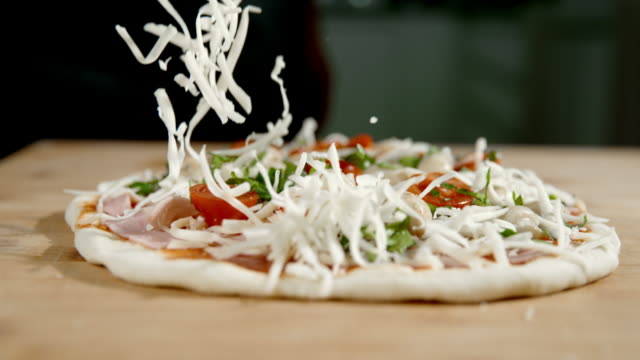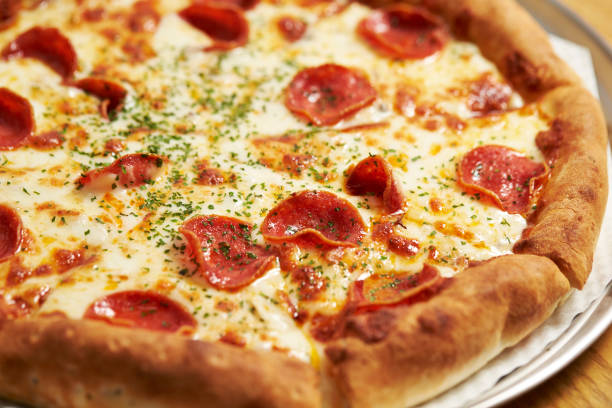Embarking on a culinary journey often leads us to one of the world’s most beloved dishes: pizza. Yet, behind its mouthwatering allure lies a question many of us ponder—how many calories are in a slice of pizza? This seemingly simple inquiry unravels a complex tapestry of factors, including toppings, crust thickness, and preparation methods, making it a topic ripe for exploration. Our comprehensive guide delves deep into the heart of pizza’s caloric landscape, offering insights that will not only satisfy your curiosity but also empower you with knowledge to make informed dietary choices.
Understanding the caloric content of a slice of pizza is more than a numerical pursuit; it’s a step towards mindful eating and healthier living. Whether you’re a fitness enthusiast tracking your intake, someone managing their weight, or simply a pizza aficionado seeking balance, this article promises valuable revelations. We’ll dissect the elements that contribute to the calorie count, compare different types of pizzas, and provide practical tips for enjoying your favorite slice without derailing your nutritional goals.
So, if you’ve ever found yourself wondering about the calories lurking in your pizza box, prepare to embark on a flavorful journey of discovery. Our expert analysis will not only quench your thirst for knowledge but also inspire a more conscious relationship with one of the culinary world’s most iconic dishes. Join us as we peel back the layers of cheese, sauce, and dough to reveal the secrets of pizza’s caloric content, and perhaps, in the process, transform the way you savor each delicious bite.
The Basics: Calories in an Average Slice of Cheese Pizza

The number of calories in a slice of plain cheese pizza can vary significantly based on the size of the slice, thickness of the crust, type of cheese used, and other factors. Here is a general calorie estimate for a typical slice:
- Average slice of thin-crust cheese pizza: 250-300 calories
- Average slice of thick-crust cheese pizza: 300-350 calories
Portion sizes also impact the calories. Many pizza chains offer oversized 10-12 inch slices that can contain 400 calories or more. Choosing a small or medium 8-inch slice will reduce the calorie count.
Calories by Popular Styles of Pizza
Beyond basic cheese pizza, there are endless varieties of pizza to choose from. Here are the average calories for some of the most popular styles of pizza:
Neapolitan
- Thin, soft crust
- Light tomato sauce
- 230 calories per average 8-inch slice
New York Style
- Large hand-tossed crust
- Minimal toppings
- 250 calories per average 8-inch slice
Pepperoni
- Popular meat topping
- Can add 50+ calories over cheese
- 275 calories per average 8-inch slice
Chicago Deep Dish
- Thick, buttery crust
- Abundant toppings
- 280 calories per average 8-inch slice
Detroit Style
- Thick, airy crust
- Brick cheese
- 290 calories per average 8-inch slice
What Impacts the Calories in Pizza?
Many factors influence the calorie content of a slice of pizza. Being aware of these key factors can help you make lower calorie choices while still enjoying pizza:
- Size of the slice: Calories increase with larger slice sizes.
- Crust thickness: Thin crust is lower cal than thick crust.
- Type of crust: Cauliflower or gluten-free crusts can save calories.
- Cheese amount and type: Extra cheese adds calories, lower-fat cheeses reduce it.
- Toppings: Meat, veggies, sauce all impact calorie count.
- Cooking method: Deep dish is higher cal than stone baked.
- Portion control: Eating 1-2 slices instead of 3-4 reduces calorie intake.
Nutritional Value of Pizza
Despite the high calorie count, pizza can also provide important nutrients, especially if you choose the right toppings and crust. Here is the nutritional value in an average slice of cheese pizza:
| Nutrient | Amount |
| Calories | 250-350 |
| Fat | 10-15g |
| Carbs | 30-40g |
| Protein | 15-20g |
| Sodium | 500-800mg |
The protein comes from the cheese, while the carbs and calories mainly come from the dough. Sodium is high due to the salt and cheese. Choosing vegetable toppings provides important vitamins and minerals.
Potential concerns with pizza are the high sodium content, saturated fat from cheese, and refined carbs from white flour crusts. But there are ways to mitigate these issues through thoughtful ingredient choices.
Tips for Making Healthier Pizza Choices

You can still enjoy pizza while cutting back on calories by following these simple tips:
- Go for thin crust or smaller slices to reduce empty carbs and calories.
- Load up on veggie toppings like peppers, onions, mushrooms. They add nutrients without lots of calories.
- Pick healthier meats like chicken or turkey sausage over pepperoni.
- Use lighter cheese blends or just a sprinkling of regular cheese.
- Flavor with herbs and spices instead of salt to reduce sodium.
- Opt for whole grain or cauliflower crusts for more fiber and nutrients.
- Eat just 1-2 slices and add a side salad for balance.
Conclusion
Pizza can be a tasty and satisfying food when consumed in moderation. Knowing the average calories in different pizza styles and slices can help you stay mindful of portions. Choosing healthier crusts and toppings also allows you to create lower calorie pizza options. With some simple tweaks, you can still enjoy the delicious flavors of pizza as part of an overall balanced diet.
